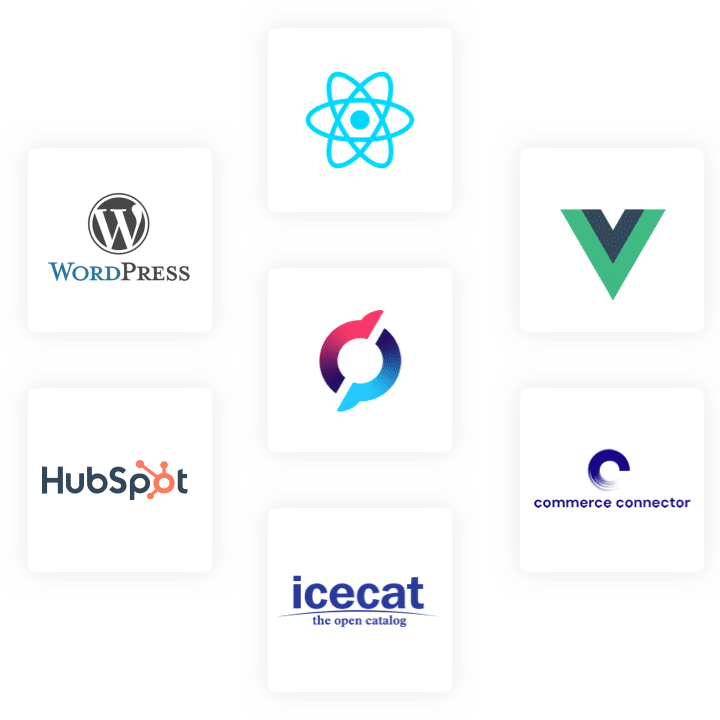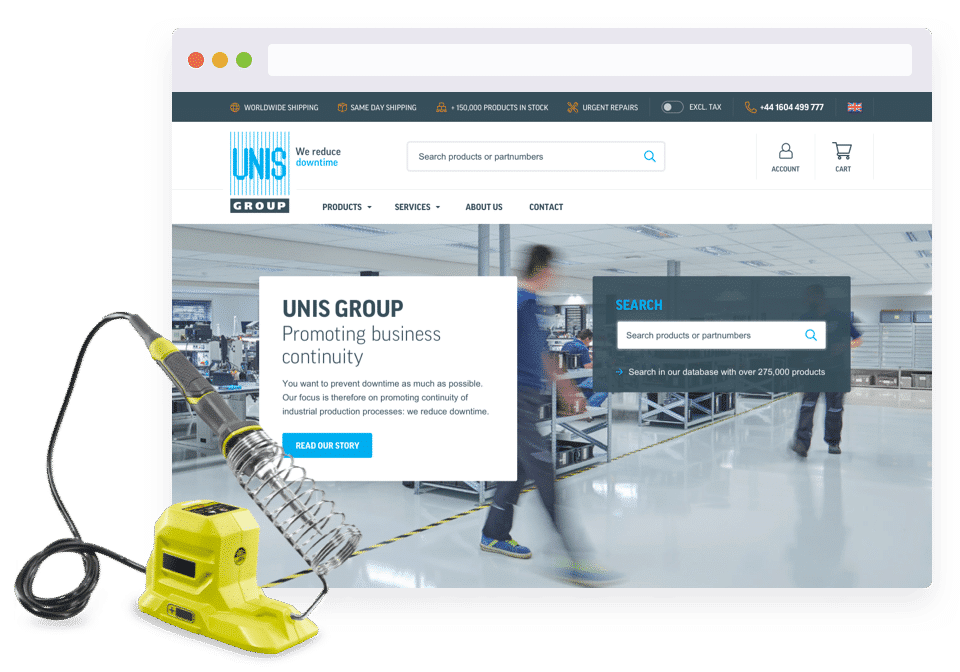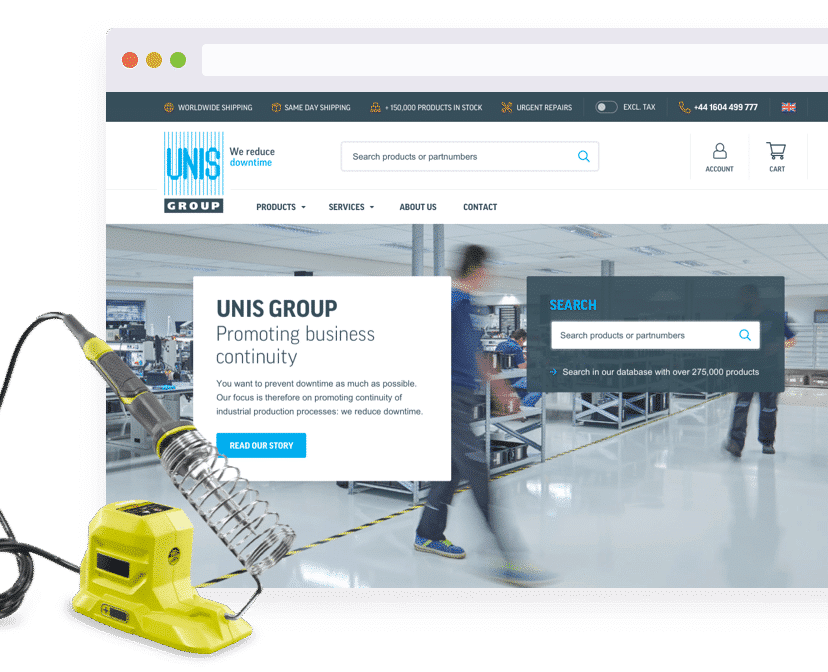
Internationalization
Use the power of a Headless Platform for the international rollout of your platform.
Give your customer the front-end experience that suits them best
Our headless architecture makes it easy to roll out multi-stores on the front-end while working from the same commerce (back-end) platform.
You can easily choose in which language you want to present your front-end platform. You can easily make adjustments to a local webshop by adjusting an existing front-end design, an off-the-shelf template, or designing a shop from scratch.
Multi-Language and Multi-Currency functionalities are a standard part of the features of our SAAS solution.
Headless Commerce: the first platform that makes both marketeers and developers happy
Until recently, developers and marketeers were often at odds when selecting a B2B platform. If you opted for high-end technology on the back end, marketeers often complained about a spartan CMS they had to work with. And the fancy CMS they knew from the B2C market did not work well with the complex back end in the B2B segment.
With Headless Commerce, those two sides are disconnected and linked via an API, allowing B2B customers to have a B2C experience as well. Best-of-breed of both, flexible and stable.
Happy marketeer, happy developer, happy dealer, happy customer.

Repairs, new products and refurbished in one shop for UNIS Group
B2B Features
Propeller is pure B2B e-commerce. That means that typical B2B functionalities are built into the core of the platform. PIM, marketing automation, customer intelligence, and CMS for B2B organizations. No plugins or add-ons.
ERP integration
For seamless order processes, real-time accurate data and rich product information Propeller integrates with al mayor ERP systems
Customer specific pricing
Creating a specific pricing plan for each customer would be a boost to customer loyalty to your store.
OCI Roundtrips
An Open Catalog Interface (OCI) allows your customers to search and order products from their ERP.
Customer specific agreements
Cater to the specific needs of every customer. Specific pricing, catalog, budgets, authorization.
Digital self-service portals
Every B2B customer gets his own portal, specific prices, own catalog. For self-service commerce, overviews, FAQ’s, returns.
Localization
Manage the translations of all product data in a well-organized manner, via classifications, descriptions and product characteristics, even units.
Payment providers
Use the payment providers that fit your needs and the needs of your customers.
Analyze Products
Show your customer only relevant products and complete information. Analyze products and attributes and decide data-driven what rules need to apply.












